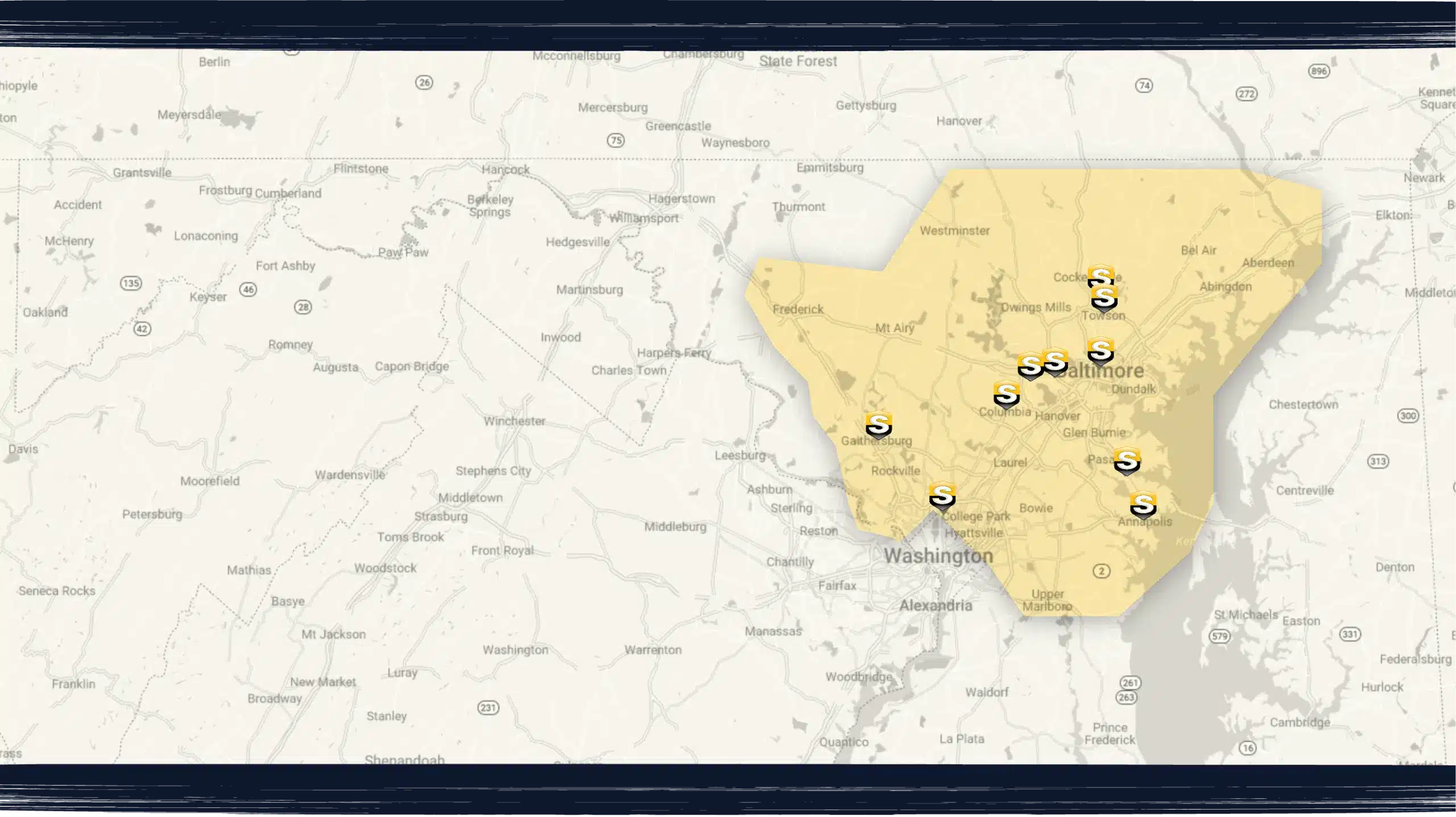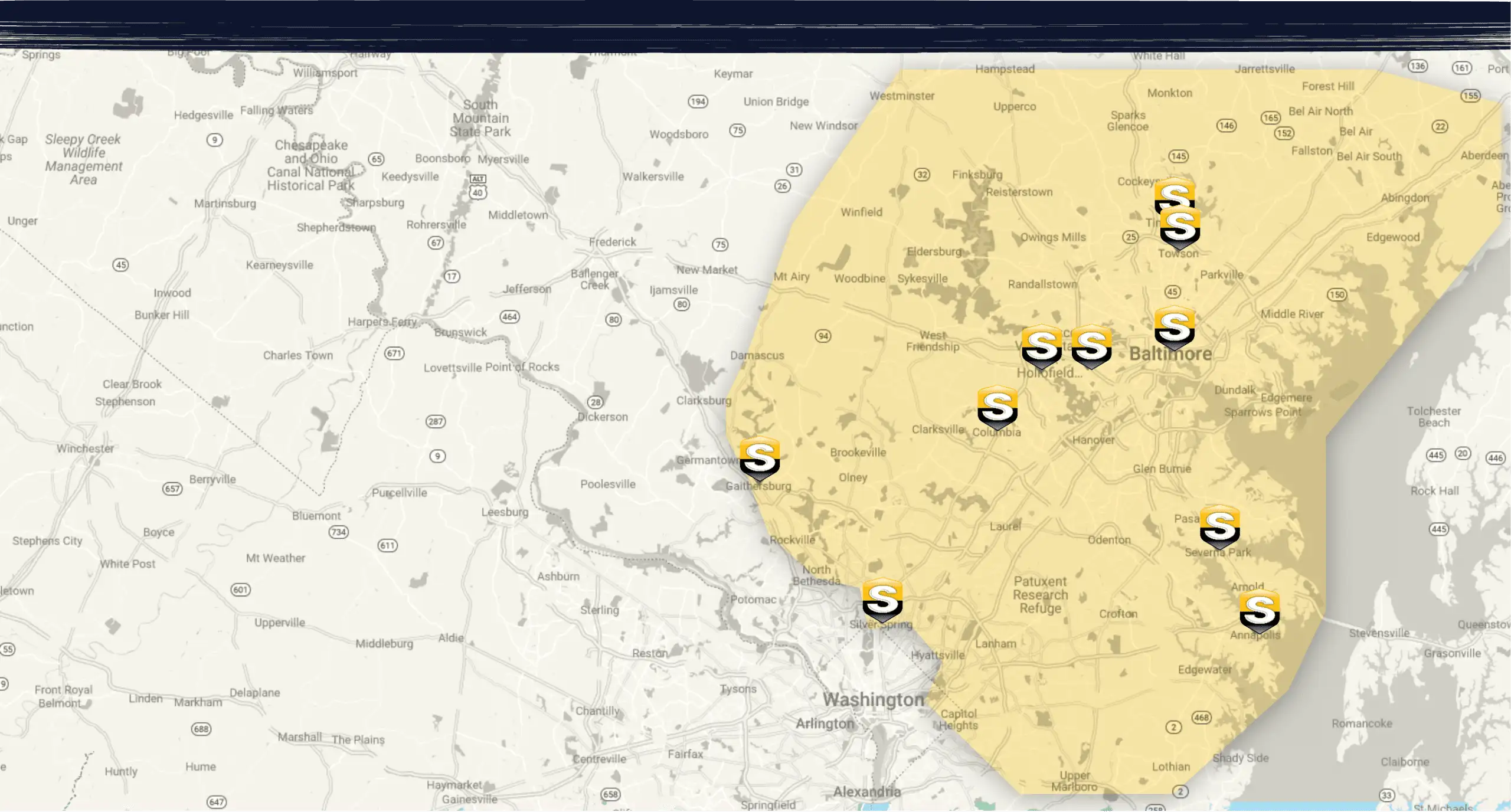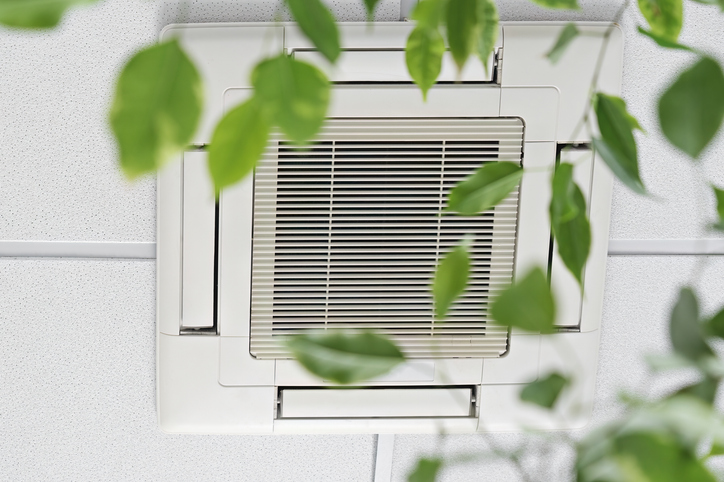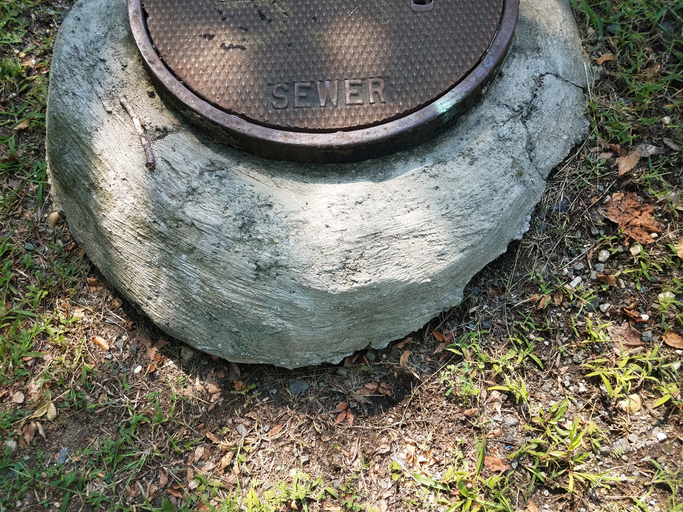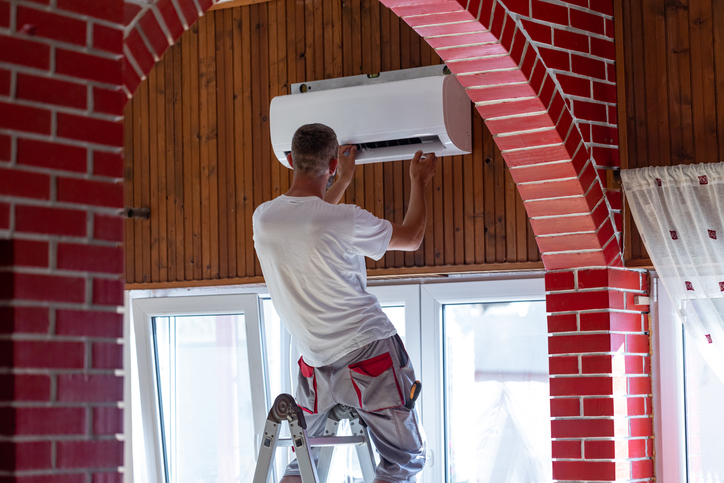
Geothermal FAQs
Throughout the year, outdoor temperatures fluctuate with the changing seasons. However, underground temperatures do not. In fact, about four to six feet below the earth’s surface, temperatures remain relatively constant year-round. A geothermal system, which consists of an indoor unit and a buried earth loop, capitalizes on these constant temperatures. In the winter, fluid circulating through the system’s earth loop absorbs stored heat and carries it indoors. The indoor unit compresses the heat to a higher temperature and distributes it throughout the building. In the summer, the system reverses, pulling heat from the building, carrying through the earth loop, and depositing it in the cooler earth.
A geothermal system utilizes the energy from the sun, which is stored in the earth, to heat and cool homes and buildings. Typically, electric power is used only to operate the unit’s fan, compressor, and pump. So, unlike conventional systems, geothermal systems do not burn fossil fuel to generate heat–they simply transfer heat to and from the earth.
A geothermal system is more than three times as efficient as the most efficient conventional system. Because geothermal systems do not burn combustible fuel to make heat, they provide three to four units of energy for every unit used to power the system.
Because geothermal systems work with nature, not against it, they minimize the threats of acid rain, air pollution, and the greenhouse effect. An environmentally friendly fluid is used in the closed, continuous loop.
No. In fact, geothermal systems are practically maintenance-free. When installed properly, the buried loop will last for generations. And the other half of the operation–the unit’s fan, compressor, and pump–is housed indoors, protected from the harsh weather conditions. Usually, periodic checks and filter changes are the only required maintenance.
Questions To Know About New Heating System
Furnaces are designed to provide specific amounts of heat energy per hour. The term “BTUH” refers to how much heat can be produced by the unit in an hour. Before you can determine what size furnace you’ll need, you must have a heat loss/heat gain calculation done on the structure. From that, an accurate determination can be made of the size of the heating system you’ll need. Most fossil fuel furnaces are substantially oversized for heating requirements, resulting in increased operating costs.
All types of heating and cooling systems have a rated efficiency. Fossil fuel furnaces have a percentage efficiency rating. Natural gas, propane, and fuel oil furnaces have efficiency ratings based on laboratory conditions. To get an accurate installed efficiency rating, factors such as flue gas heat losses, cycling losses caused by oversizing, blower fan electrical usage, etc., must be included. Geothermal heat pumps, as well as all other types of heat pumps, have efficiencies rated according to their coefficient of performance or COP. It’s a scientific way of determining how much energy the system produces versus how much it uses. Most geothermal heat pump systems have COPs of 2.5 – 3.5. That means for every unit of energy used to power the system, two and one-half to three and one-half units are supplied as heat. Where a fossil fuel furnace may be 50-90 percent efficient, a geothermal heat pump is about 300 percent efficient. Some geothermal heat pump manufacturers and electric utilities use computers to accurately determine the operating efficiency of a system for your home or building.
Yes. If you have an open-loop system, your entering water temperatures (EWTs) may range from the 70s in the southern United States to the 40s in Canada. All heat pumps can handle temperatures in moderate to warm ranges. A closed-loop system, on the other hand, will encounter EWTs below freezing. Not all geothermal heat pumps will operate efficiently at those temperatures. It’s important for you to know what EWTs your heat pump will handle.
Don’t be afraid to ask for references from dealers. A reputable dealer won’t hesitate to give you names and numbers to call to confirm his capabilities. The same applies to the loop installer.
That depends on several factors as stated earlier. A dealer should be willing to install what’s best for you, not for him.
To figure this out accurately, you must know how much per year you’ll save in energy costs with a geothermal system and the difference in costs between it and the alternative heating system and central air conditioner. To calculate your return on investment (payback in a number of years), divide the annual savings into the additional cost. When you install a geothermal system in a new home, the monthly savings in operating costs will generally offset the additional monthly cost in the mortgage, resulting in a monthly positive cash flow immediately. Keep in mind that energy savings are only one of the many benefits you receive from a geothermal system.
Not always. It may be desirable to install geothermal heat pump room units. For some small homes, one room unit would provide most of the heating and cooling needs. Ceiling cable or baseboard units could then be used for supplemental heat.
YOUR ELECTRIC UTILITY. Most electric utilities have information about these systems. If you have a question they can’t answer, they will put you in contact with someone who can.
How Does A Heat Pump Work?
A geothermal heat pump is an electrically-powered device that uses the natural heat storage ability of the earth and/or the earth’s groundwater to heat and cools your home or business.
Like any type of heat pump, it simply moves heat energy from one place to another. Your refrigerator works using the same scientific principle. By using the refrigeration process, geothermal heat pumps remove heat energy stored in the earth and/or the earth’s groundwater and transfer it indoors.
The earth has the ability to absorb and store heat energy. To use that stored energy, heat is extracted from the earth through a liquid medium (groundwater or an anti-freeze solution) and is pumped to the heat pump or heat exchanger. There, the heat is used to heat the air. In summer, the process is reversed and indoor heat is extracted from indoors and transferred to the earth through the liquid.
One of the things that makes a heat pump so versatile is its ability to be a heating and cooling system in one. You can change from one mode to another with a simple flick of a switch on your indoor thermostat. In the cooling mode, a geothermal heat pump takes heat from indoors and transfers it to the cooler earth through either groundwater or an underground loop system.
No. The same loop works for both. All that happens when changing from heating to cooling, or vice versa, is that the flow of heat is reversed.
There are two main types: open and closed. The next two sections will give you specifics about each.
The buried pipe, or “ground loop,” is the most recent technical advancement in heat pump technology. The idea to bury pipes in the ground to gather heat energy began in the 1940s. It’s only been in the last few years that new heat pump designs and improved pipe materials have been combined to make geothermal heat pumps the most efficient heating and cooling systems available.
Closed Loop Systems
The term “closed-loop” is used to describe a geothermal heat pump system that uses a continuous loop of special buried plastic pipe as a heat exchanger. The pipe is connected to the indoor heat pump to form a sealed, underground loop through which an antifreeze solution is circulated. Unlike an open-loop system that consumes water from a well, a closed-loop system recirculates its heat-transferring solution in a pressurized pipe.
That depends on land availability and terrain. Most closed loops are trenched horizontally in yards adjacent to the building. But any area near a home or business with appropriate soil conditions and adequate square footage will work.
Trenches are normally four to six feet deep and up to 400 feet long, depending on how many pipes are in a trench. One of the advantages of a horizontal loop system is being able to lay the trenches according to the shape of the land. As a rule of thumb, 500-600 feet of pipe is required per ton of system capacity. A well-insulated 2,000-square-foot home would need about a three-ton system with 1,500 – 1,800 feet of pipe.
Normally, a run of pipe is laid at five feet and then looped back over itself at three feet once the bottom pipe is covered with soil. This allows more length of pipe to be put in one trench and has no adverse effect on system efficiency. Other loop designs use four or six pipes and allow for shorter trenches if the land area is limited.
Closed-loop systems can also be vertical. Holes are bored to about 125-150 feet per ton of heat pump capacity. U-shaped loops of pipe are inserted in the holes. The holes are then backfilled with a sealing solution.
Closed-loop systems should only be installed using high-density polyethylene or polybutylene pipe. Properly installed, these pipes will last for many decades. They are inert to chemicals normally found in soil and have good heat-conducting properties. PVC pipe should not be used under any circumstances.
The only acceptable method to connect pipe sections is by thermal fusion. Pipe connections are heated and fused together to form a joint stronger than the original pipe. Mechanical joining of pipe for an earth loop is never an accepted practice. The use of barbed fittings, clamps, and glue joints is certain to result in loop failure due to leaks.
No. Research has proven that loops have no adverse effect on grass, trees, or shrubs. Most horizontal loop installations use trenches about six inches wide. This, of course, will leave temporary bare areas that can be restored with grass seed or sod. Vertical loops require little space and result in minimal lawn damage.
No. An earth loop will reach temperatures below freezing during extreme conditions and may freeze your septic system. Such usage is banned in many areas.
It’s not recommended. In addition to the thermal fusion of the pipe, good earth-to-coil contact is very important for successful loop operation. Nonprofessional installations may result in less than optimum system performance.
Yes, if it’s deep enough and large enough. A minimum of six feet in depth at its lowest level during the year is needed for a pond to be considered. The amount of surface area required depends on the heating and cooling load of the structure.
Open Loop Systems
The term “open-loop” is commonly used to describe a geothermal heat pump system that uses groundwater from a conventional well as a heat source. The groundwater is pumped into the heat pump unit where heat is extracted, then the water is disposed of in an appropriate manner. Since groundwater is a relatively constant temperature year-round, it is an excellent heat source.
There are a number of ways to dispose of water after it has passed through the heat pump. The open discharge method is the easiest and least expensive. Open discharge simply involves releasing the water into a stream, river, lake, pond, ditch, or drainage tile. Obviously, one of these alternatives must be readily available and must possess the capacity to accept the amount of water used by the heat pump before open discharge is feasible. A second means of water discharge is the return well. A return well is a second well bore that returns the water to the ground aquifer. A return well must have enough capacity to dispose of the water passed through the heat pump. A new return well should be installed by a qualified well driller. Likewise, a professional should test the capacity of an existing well before it is used as a return.
Geothermal heat pumps used in open-loop systems need differing amounts of water depending on the size of the unit and the manufacturer’s specifications. The water requirement of a specific model is usually expressed in gallons per minute (g.p.m.) and is listed in the specifications for that unit. Your heating contractor should be able to provide this information. Generally, the average system will use 1.5 g.p.m. per ton of capacity while operating. Your well and pump combination should be large enough to supply the water needed by the heat pump in addition to your domestic water requirements. You will probably need to enlarge your pressure tank or modify your plumbing to supply adequate water to the heat pump.
Poor water quality can cause serious problems in open-loop systems. Your water should be tested for hardness, acidity, and iron content before a heat pump is installed. Your contractor or equipment manufacturer can tell you what level of water is acceptable. Mineral deposits can build up inside the heat pump’s heat exchanger. Sometimes a periodic cleaning with a mild acid solution is all that’s needed to remove the build-up. Impurities, particularly iron, can eventually clog a return well. If your water has a high iron content you should be sure that the discharge water is not aerated before it’s injected into a return well. Finally, you should opt against using water from a spring, pond, lake, or river as a source for your heat pump system unless it’s proven to be free of excessive particles and organic matter. They can clog a heat pump system and make it inoperable in a short time.
No. They are pollution free. The heat pump merely removes or adds heat to the water. No pollutants are added whatsoever. The only change in the water returned to the environment is a slight increase or decrease in temperature. Some people are concerned that open-loop systems contribute to the depletion of our groundwater resources. This issue is not critical in some parts of North America because of abundant supplies of groundwater.
In some localities, all or parts of the installation may be subject to local ordinances, codes, covenants, or licensing requirements. Check with local authorities to determine if any restrictions apply in your area.
Parts Of The System
The three main parts are the heat-pump unit, the liquid heat-exchange medium (open or closed loop), and the air-delivery system (ductwork).
No. There are different kinds of geothermal heat pumps designed for specific applications. Many geothermal heat pumps, for example, are intended for use only with higher-temperature ground water encountered in open-loop systems. Others will operate at entering water temperatures as low as 25 degrees F which is possible in closed-loop systems. Most geothermal heat pumps provide summer air conditioning, but a few brands are designed only for winter heating. Sometimes these heating-only systems incorporate a groundwater-cooled coil that can provide cooling in moderate climates. Geothermal heat pumps can also differ in the way they are designed. Self-contained units combine the blower, compressor, heat exchanger, and coil in a single cabinet. Split systems allow the coil to be added to a forced-air furnace and utilize the existing blower.
Geothermal heat pumps will reduce your heating and cooling costs regardless of how well your home is insulated. However, insulating and weatherizing are key factors in realizing the most savings from any type of heating and cooling system. The illustration below shows typical insulating standards suggested by many electric utilities. You may wish to contact your utility for recommendations on your home.
Yes. Using what’s called a desuperheater, some types of geothermal heat pumps can save you up to 50 percent on your water-heating bill by preheating tank water. Desuperheaters are standard on some units and optional on others. Some geothermal models can provide all of your hot water needs on demand at the same high efficiencies as the heating/cooling cycles.
Most units are easy to install, especially when they are replacing another forced-air system. They can be installed in areas unsuitable for fossil fuel furnaces because there is no combustion, thus, no need to vent exhaust gases. Ductwork must be installed in homes that don’t have an existing air distribution system. The difficulty of installing ductwork will vary and should be assessed by a contractor.
Split systems can easily be added to existing furnaces for those wishing to have a dual-fuel heating system. Dual-fuel systems use the heat pump as the main heating source and a fossil fuel furnace as a supplement in extremely cold weather if additional heat is needed.
In all probability, yes. Your installing contractor should be able to determine ductwork requirements and any minor modifications if needed.
Geothermal heat pumps don’t use large amounts of resistance heat, so your existing service may be adequate. Generally, a 200-amp service will have enough capacity, and smaller amp services may be large enough in some cases. Your electric utility or contractor can determine your service needs.
Your contractor should provide a heating and cooling load calculation (heat loss, heat gain) to guide your equipment selection. Geothermal heat pumps are sized to meet your cooling requirements. Depending on your heating needs, a geothermal heat pump will supply 80-100 percent of your design heating load. Sizing the heat pump to handle your entire heating needs may result in slightly lower heating costs, but the savings may not offset the added cost of the larger heat pump unit. Also, an oversized unit can cause de-humidification problems in the cooling mode, resulting in a loss of summer comfort.
Source: Electric Institute of Indiana, (410) 634-7651!
Contact Supreme Service Today at 410-781-1002 to schedule your Geothermal Services in Baltimore, MD, and surrounding areas!
REQUEST A QUOTE
Once you submit, we may reach out to you via phone, email, or text to fetch information, which you can opt out of at any time. We will never share your personal information with third parties for marketing purposes. Consent is not a condition of purchase. Message/data rates apply.




